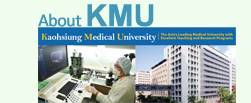Division of Infectious Diseases, Department of Internal Medicine |
|
| Department Profile: |
| The major communicable diseases in our division include HIV/AIDS, tuberculosis, dengue fever, and so on. We also have patients with pneumonia, urinary tract infection, intra-abdominal infection, infective endocarditis, osteomyelitis and other common infectious diseases in our ward. There are 32 ordinary beds and 15 beds in negative-pressure isolation ward. There are 7 attending physicians in our division. In addition to clinical practice, we are in charge of infection control. |
 |
|
| Work description: |
 |
- Basic program: Integration of lecture, clinical ward run and field investigation to gain knowledge of epidemiological and clinical characteristics of common infectious diseases in Taiwan: HIV/AIDS, pulmonary and extrapulmonary tuberculosis and unique tropical infectious diseases in Taiwan; such as dengue fever, scrub typhus, Q fever and murine typhus.
- Advanced program: Through discussion with clinician, case managers and patients (HIV and tuberculosis) the students would learn the setup of patient education program (printed or electronic pamphlet, poster et al.)
|
|
| Additional desired intern qualifications: |
- Passion for the service of programs for HIV and tuberculosis
- Passion for the care of patients with tropical infectious diseases.
- Passion for the conversation with patients
- Adequate performance for "hand hygiene".
- Good concept for precaution, including universal precaution, contact precaution, droplet-borne precaution, and airborne precaution to protect yourself.
- Adequate vaccination programs.
|
|
|



![]() Aboriginal Health Promotion Center, Department of Community Medicine
Aboriginal Health Promotion Center, Department of Community Medicine![]() Department of Medical Research
Department of Medical Research![]() Division of Infectious Diseases, Department of Internal Medicine
Division of Infectious Diseases, Department of Internal Medicine![]() Department of Traditional Chinese Medicine
Department of Traditional Chinese Medicine![]() Administration Center
Administration Center ![]() Department of Medical Information
Department of Medical Information![]() International Graduate Student Program
International Graduate Student Program 











